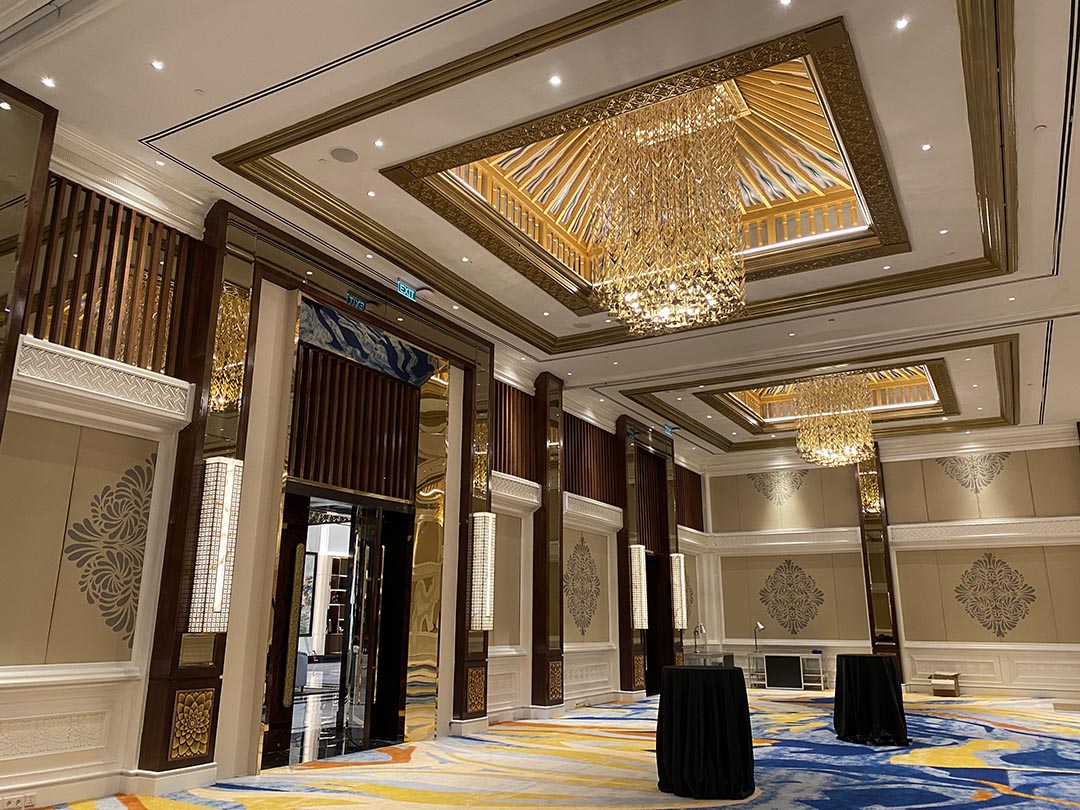Situated on the shores of Jimbaran bay, InterContinental Bali Resort is known for its luxurious hospitality and beautiful tropical surrounds. October 2022 marked the resort’s 29th anniversary and to celebrate the whole resort has been renovated with enhanced facilities and offerings to guests. As well, the resort has launched a new indoor event space, claimed to be the second largest in Bali: the Jimbaran Convention Centre.
Written by Jane Somerville
Photos by Devy Anggraeny
As the InterContinental Bali Resort celebrates 29 years, the entire resort has been updated to evoke the signature luxury the InterContinental brand is known for. Set on the edge of a white sandy beach within an idyllic 14-hectare landscape, the resort is a 15-minute drive from the international airport. Returning guests may notice the brighter hotel lobby with the inclusion of natural marble; the 430 rooms and suites have updated bathrooms and new furnishings. As well, all five restaurants have been upgraded with new looks and menu concepts and there are new club lounges and wellness facilities.
The resort’s most significant addition is the Jimbaran Convention Centre (JCC) located within the resort gardens. Designed by ARKdesign Architects with interior by Indesign Domus and built by Parama Dharma, this new building contains two and a half floors. Its flexible, with more than a dozen multi-purpose spaces able to host a wide variety of event styles from conventions to weddings. Level one contains The Imperial Grand Ballroom, Puri Kencana Ballroom, Ramayana VIP Room and Mahabarata VIP Room. The mezzanine holds an expandable Pandawa Ballroom and two boardrooms, and links to the main resort building. The second floor has six rooms of different sizes suitable for business meetings and official gatherings. In addition, three outdoor spaces, set within lush tropical gardens, can cater from 100 to 2,500 guests.
Preserving the sense of serenity felt within the resort, was an important consideration for the architects in planning the design of JCC. The architecture is the “catalyst”, as Paul Tan, founder and principle designer of ARKdesign stated: “This way the architecture plays host to the activities around it including the beautiful landscape of Bali”. Before construction, the 8000 sqm site had many well-established trees which dated from the beginning of the hotel’s development in 1993. Rather than being cut down, many were transplanted to other locations within the grounds such as the outdoor terrace in the east and south areas. He then used the tropical landscape to create a synchronicity between the new and existing buildings.
Devy Anggraeny, director of Indesign Domus and lead designer for JCC explained their approach: “We made the landscape a common link. The ballroom facade on the second floor dominated by Lee Kuan Yew ornamental plants that will cover the walls of the building and Alamanda plants mark the building entrance. We want this building to be at one with nature, not screaming architecture. In addition, we also used some of the same finishings as the existing building, namely the Jogja Paras stone, so that even though they have different shapes they bond.”
Like in the resort, the architecture of the new building features traditional Balinese elements throughout. The main entrance canopy features the angkul angkul (or main entrance gate) usually seen in traditional houses. The dedange (the trap level above the door) is three levels – the odd number as dictated by Balinese beliefs. The pre-function area references Indonesian pavilions in the use of umpak (or pillar supports). In the ceilings of the entrance spaces traditional fabric patterns, (applied using laser cutting on sheet metal), function as focal points and as a substitute for chandeliers. The Loggia features chandeliers made by craftspeople from Java. These details, as Paul explains “are beautiful gems hidden all around the building for those discerning eyes to feel, observe and enjoy as the general ambience, without it screaming at you”
The Imperial Grand Ballroom is the centrepiece of JCC with an area of 2,300 sqm and a capacity of 2,200 people. Entry is via the pre-function area, named the Loggia, dominated by transparent glass walls which provide a transition between the garden landscape to inside. The floor to ceiling windows maximise natural light and allow people to see the landscape outside and vice versa.
Devy continued, “The overall interior concept was of an art gallery in luxurious contemporary style, again with Balinese accents. Many of the artworks hanging inside can be seen from outside, enhancing the feel of indoor, outdoor spaces synonymous with Bali. The 10 metre ceilings feature an alabaster gold-stepped design which both accentuates luxury and pay tribute to the InterContinental brand. Plush carpets in abstract patterns and the contemporary loose furniture by Damar Interior enhance the opulent feel. Several Balinese design elements feature throughout in door handles, lighting fixtures and door panels”.
Inclusivity is part of the InterContinental’s initiative, and the ballroom is designed as a disabled-friendly space with ramps, lifts and disabled toilets installed. The ballroom is the only one in Indonesia equipped with hearing aid systems specifically the T-coil and wifi based hearing system. This technology is also extending to mobile technology where hearing aids can be broadcast using android and iPhone applications. Further to this, this technology can also be used as an interpreter system for events requiring language translation.
Functionality is of prime importance in a convention centre and all equipment throughout JCC is the most up-to-date European standards. The audio technology is the same system used in theme parks worldwide, such as Disneyland, and in five-star hotels. Each ballroom has audio visual interconnection that support the latest technologies and every facility – including lights, projectors, screens, and audio mixing is controlled though touch panel automation to enable operators to be able to answer the needs of guests easily.
With flexible contemporary design and the latest technology applied across the building, these features will ensure JCC and its jewel, The Imperial Grand Ballroom, will establish new benchmark for tourism in Indonesia.
